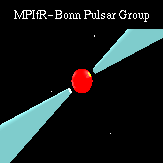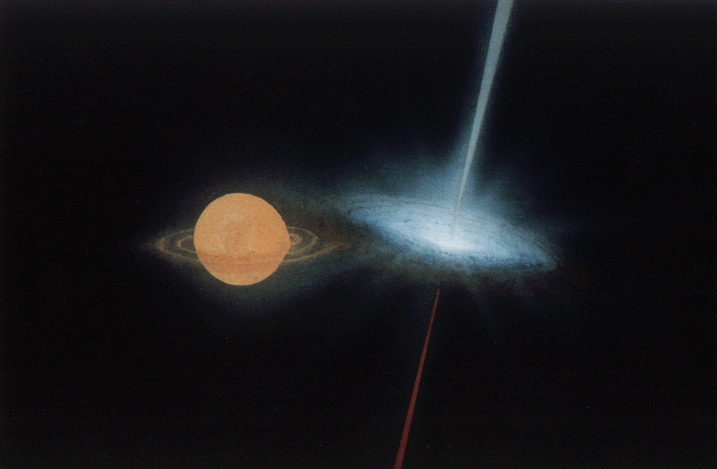| A supernova explosion forms a pulsar |  |
 | |
| [MPIfR] | |
 |
| The strange object SS 433, a massive star (left) and a neutron star (right) with jets. [NASA/GSFC] |
| A supernova explosion forms a pulsar |  |
 | |
| [MPIfR] | |
 |
| The strange object SS 433, a massive star (left) and a neutron star (right) with jets. [NASA/GSFC] |